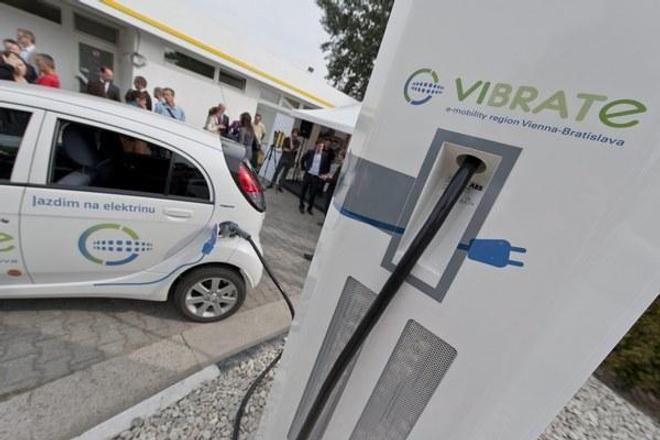While it sets ambitious goals in terms of the number of e-cars and plug-in vehicles to be seen on Slovak roads in a few years, it lacks any tangible support schemes.
“The strategy has been elaborated in efforts to help the development of the automotive industry in Slovakia and electric mobility in Slovakia as well as because of the support of the growth of the industrial production based on increase of its competitiveness via innovations and innovative technologies and because of creation of the Slovak platform for e-mobility,” according to an Economy Ministry statement.
“Slovakia, alas, has been lagging in this development not only behind leaders but also neighbouring countries in the region,” writes the ministry.
From the long-term view, the electric mobility can increase usage of alternative fuels in transport and thus to contribute to improvement of the environment in terms of reduction of emissions as well as noise, the ministry writes.
The strategy forecasts that between 600 and 4,000 electric cars and plug-in hybrid vehicles will take to Slovak roads in 2016 and 2017. Their number should increase to between 10,000 and 25,000 in 2020. By that time Austria and Germany should have 250,000 and 1 million such cars should drive, respectively.
“Electromobility represents an important impulse for the economic growth and a pro-export opportunity,” the strategy elaborated by the Economy Ministry reads. “But for its utilisation there must exist a certain balance while it is important that a prospering electromobility market arises also in Slovakia.”
The Economy Ministry recommends several systemic tools for support of the electric mobility development. These include stimulation of the growth of the sale of e-cars and plug-in vehicles, so-called green procurement, support of science, research, development and innovations, support of development of the network of charging stations as well as an information campaign. In terms of the support of the sale of electric and plug-in vehicles indicates a possibility of forgiveness of some costs, but the strategy does not elaborate what costs could be forgiven during acquisition of an electric car.
“This is a general material describing what can be done within support of electric mobility,” said Rastislav Chovanec, the state secretary of the Economy Ministry after the cabinet session as cited by the SITA newswire. “Concrete measures with concrete volume of assistance or some motivating effects will be adopted within implementation of European directive on alternative fuels sometimes during next year.”
Strategy is welcomed
The Slovak Electric Vehicle Association (SEVA) perceives adoption of the strategy in a positive way.
“So-far development of electric mobility in Slovakia was initiated and based primarily on the activity of the private sector and passivity of the state in this field was notable,” said Peter Badík, director of SEVA as cited by SITA. “Adoption of the strategy will bring a new breath for development of electric mobility in Slovakia because it will shift a needed portion of the initiative also on the level of the state administration and municipalities what is an inevitable preconditions for further growth of the field of electric mobility.”
Now it will be necessary to implement measures in the practice as soon as possible while SEVA offers its assistance as an expert partner, according to Badík.
Slovakia makes but does not use e-cars
There are more than 170 electric cars and up to 100 hybrid and plug-in hybrid vehicles driving Slovak roads based on the data of the Slovak Automotive Industry (ZAP). Out of three carmakers in Slovakia only Volkswagen manufactures e-cars and cars with the hybrid drive. Last year they manufactured 6,000 such vehicles, the Sme daily wrote.
For now especially the high price of electric cars, about €25,000 per vehicle, is cited as the biggest obstacle for a higher usage of electric cars in Slovakia -- though the cost of charging of such cars is low compared with classic motor fuels. At present there are about 50 charging stations, and an e-car can technically travel across the country with little trouble.
“Moreover, currently almost all charging stations offer charging for free,” said Jaroslav Sýkora from SEVA as cited by Sme.


 (source: TASR)
(source: TASR)